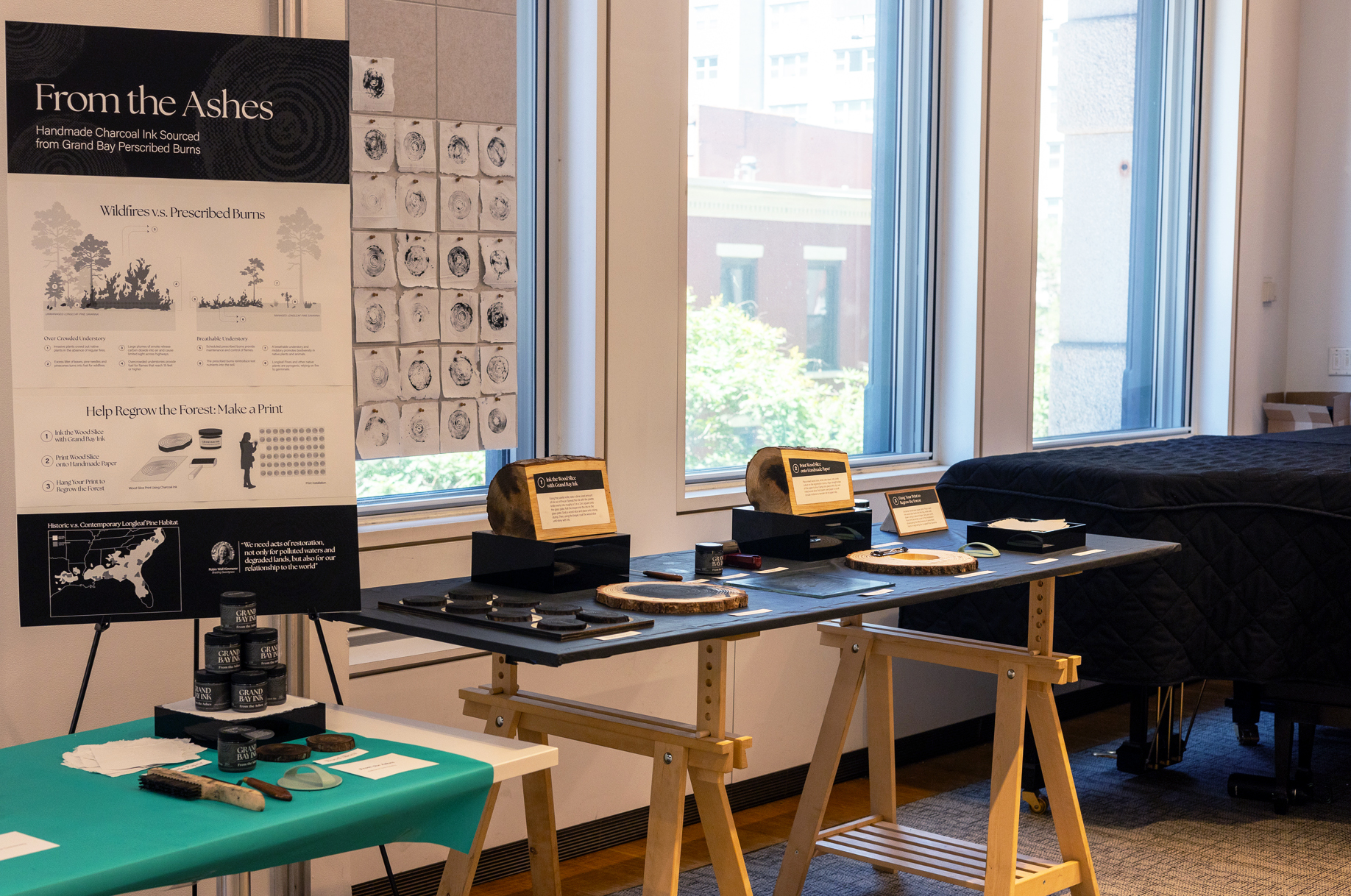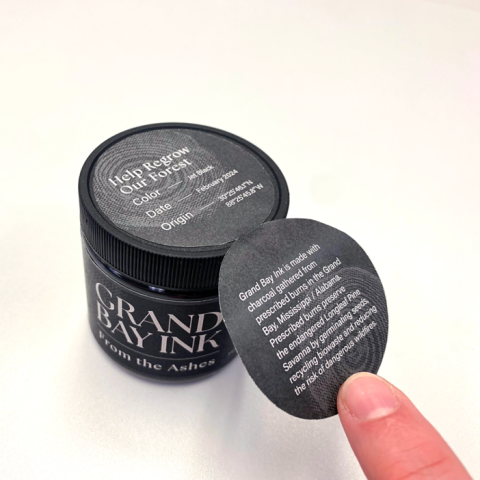Graphic Design Students, Professor Recognized at 2024 Biodesign Challenge

Three rising seniors in Auburn Graphic Design—Emiko Benton, Evan Phillips and Robert Gleason—and Assistant Professor Devon Ward were recently recognized at the 2024 Biodesign Challenge Summit.
Benton, Phillips and Gleason were awarded Outstanding Biodesign Display, while Ward, their mentor for the project, was selected as Outstanding Biodesign Instructor.
The Biodesign Challenge Summit (BDC), held at the Parsons School of Design and the Museum of Modern Art in New York City, is an international student conference and design competition supporting research into sustainable materials, biotech and new design solutions that foster a stronger relationship with the environment. This year’s Summit featured more than 400 students from 50 schools and 15 different countries, who showcased their projects before judges from academia, industry, art and design.

On a visit to the Reserve, they learned that one of the key stewardship activities at the Grand Bay NERR is the management of longleaf pine savannas—an important woodland habitat along the Gulf Coast. Longleaf pines were once found across the Southeast, but are now threatened due to deforestation, excess lumbering and habitat loss.
The stewards at Grand Bay regularly conduct prescribed burns—critical to the longleaf life cycle—to maintain a healthy forest, so Benton, Phillips and Gleason proposed using charcoal from controlled burns to create handmade “Grand Bay Ink.” They also developed an interactive educational display that allows viewers to use the charcoal ink to create their own wood block prints with sections of pine logs.

The display was designed to promote experiential learning and could theoretically be installed at a science gallery or the Grand Bay Resource Center. Through the interactive display, participants can engage in hands-on artistic activities while simultaneously learning about the importance of prescribed burns for habitat management.

Two other graphic design students, Carly DeSimone and Rae Nawrocki, also assisted with the project. DeSimone created a new label design for the “Grand Bay Ink,” while Nawrocki created a short accompanying video that outlined the project. The collaboration of all five team members was vital to the project’s success.
Gleason, Benton and Phillips originally presented “From the Ashes” at Kaleidoscope, the first annual design show for the School of Industrial and Graphic Design, where it received a studio award for best biodesign project.

In naming “From the Ashes” as the Outstanding Biodesign Display at the Biodesign Challenge, the judges recognized the project for its innovative approach to promoting conservation efforts. They also noted that the concept fostered a deeper connection between people and environmental issues.
The Auburn team’s project, “From the Ashes,” was developed to promote conservation efforts at the Grand Bay National Estuarine Research Reserve (NERR) on the Mississippi and Alabama Gulf Coast. During the spring semester, Benton, Phillips and Gleason participated in an interdisciplinary studio exploring how graphic design and biodesign could be used to support sustainability at Grand Bay.
See more in:
Faculty Recognition,
Industry Recognition,
Student Competitions,
Student Experience,
Student Recognition,
Student Work
Related people:
Devon Ward